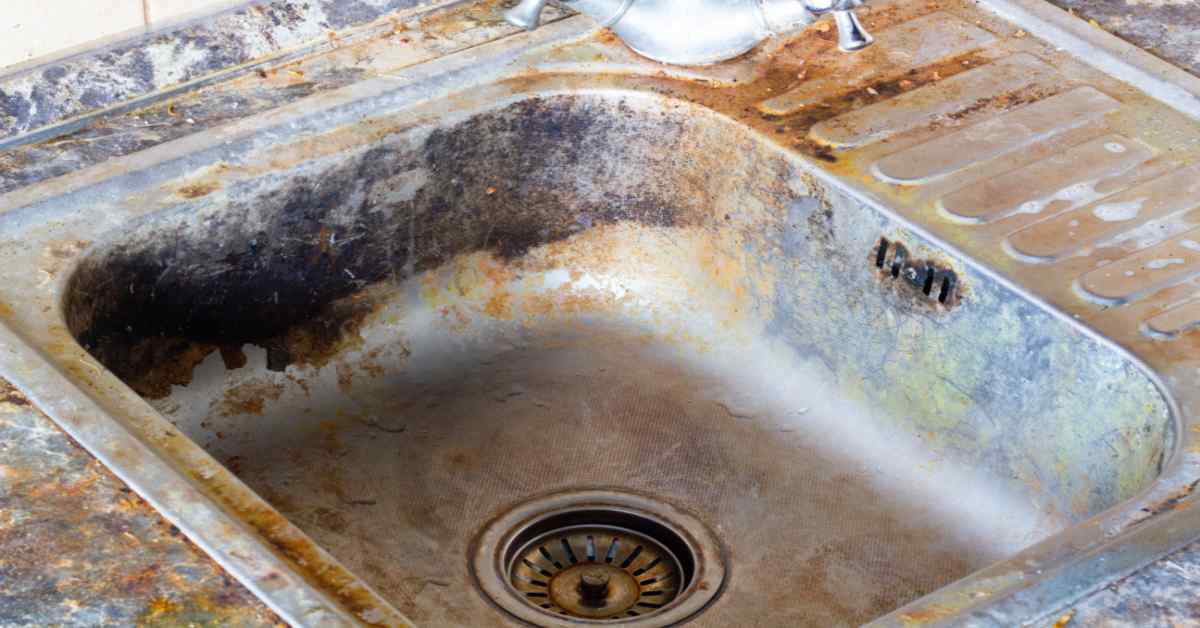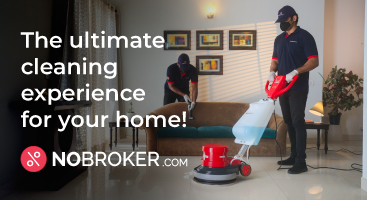Do you find yourself facing the frustrating problem of rust on your stainless steel items? Rust not only detracts from the aesthetic appeal of your belongings but can also lead to corrosion, compromising their durability and longevity. In this blog, we will provide you with practical solutions to address the issue of rust on your stainless steel items. By following our advice, you can maintain the pristine condition of your belongings and safeguard them from the potential harm caused by rust. Say farewell to the unsightly appearance and the risk of damage associated with rust, and embrace the restored beauty and functionality of your stainless steel possessions.

Things we covered for you
How to Remove Rust from Stainless Steel: Easy Home Remedies
For Small Rust Spots
To effectively get rid of small rust spots on stainless steel, you can use several methods. Here’s a detailed guide on dealing with small rust spots:
1. Baking Soda Paste
- Ingredients: 1 tablespoon baking soda and 2 cups (473 milliliters) water
- Procedure: Mix the baking soda and water to create a spreadable paste. Adjust the ratio as needed. Rub the paste onto the rust spot in the direction of the grain using a clean cloth. Rinse the area and wipe it with a damp paper towel.
2. Vinegar Method
- Ingredients: Distilled white vinegar or any type of vinegar
- Procedure: If possible, submerge the entire rusty stainless steel object in a tall cup of vinegar. This is particularly effective for items like cutlery or jewellery. Alternatively, if submersion is not possible, fill a spray bottle with vinegar and spray an even coat onto the rusty area. Wait for five minutes after applying the vinegar. Wipe the rust away with a damp sponge.
- Tip: Distilled white vinegar is recommended, but any type of vinegar will suffice.
3. Lemon Juice and Baking Soda Paste
- Ingredients: Equal amounts of lemon juice and baking soda
- Procedure: Mix lemon juice and baking soda to form a paste. Coat the rust with the paste and use a damp sponge to scrub it away. If the rust persists after one application, let the paste sit on the rust for 15-30 minutes, then scrub it away with a damp sponge.
- Tip: Lime juice can be used as a substitute for lemon juice.
4. Cream of Tartar Paste
- Ingredients: 1 tablespoon cream of tartar and a few drops of lemon juice
- Procedure: Combine cream of tartar with a few drops of lemon juice to create a paste. Cover the rusty spots with the paste and use a soft sponge to rub it firmly over the rust. Wipe away with a damp sponge and dry with a dishcloth.
5. Lighter Fluid Method
- Ingredients: Lighter fluid
- Procedure: Squirt a bit of lighter fluid onto a clean dishcloth. Scrub the rust spot using the cloth. Use this method only as a last resort due to flammability. Wipe away the lighter fluid thoroughly with a damp sponge.
6. Raw Potato Method
- Ingredients: Raw potato and dishwashing liquid
- Procedure: Cut a raw potato in half. Put a few drops of dishwashing liquid on the cut sides. Following the grain of the metal, rub the rusty area with the potato. Allow the potato to sit in the rusty area for at least four hours. Remove the potato, and wash the area well with a sponge. Rinse and dry the stainless steel with a microfiber cloth.
These methods provide diverse options for removing small rust spots from stainless steel, allowing you to choose the one that suits your preferences and available ingredients. Always exercise caution, especially with flammable substances like lighter fluid.
Read: Home Cleaning Service in BTM Layout, Bangalore
For Slightly Bigger Rust Spots
1. Rinse the Rusty Area
- For Horizontal Surfaces (e.g., sink or countertop): Pour water over the rusty area.
- For Vertical Surfaces: Use a spray bottle filled with water to thoroughly spray down the rusted surface.
2. Apply Baking Soda
- Horizontal Surface (Countertop, etc.): Sprinkle baking soda generously across the rusty area.
- Vertical Surface: Place a tray or layer of newspaper below the rusty area to catch excess baking soda. Dip your fingertips in baking soda and flick it at the wet, rusty area. The baking soda should stick to the dampened rusty surface. Allow the baking soda to sit on the rusted surface for 30-60 minutes.
3. Scrub the Area
- Use a Soft-Bristled Brush, Sponge, or Old Toothbrush: Clean the rust from the stainless steel by gently rubbing or scrubbing. Move the brush, sponge, or toothbrush in the direction of the stainless steel grain.
4. Rinse and Dry
- Rinse the Stainless Steel: Once the rust has come loose, rinse the stainless steel thoroughly with water.
- Wipe with a Damp Paper Towel: Alternatively, you can wipe the area with a damp paper towel.
- Dry the Area: Dry the stainless steel with a dry paper towel or a microfiber dishcloth.
Following these steps systematically ensures the effective removal of larger rust spots from stainless steel surfaces. Remember to be gentle while scrubbing to avoid damaging the stainless steel, and always follow up with a thorough rinse and drying process.
For Extremely Tough Rust Spots
1. Apply Oxalic Acid-Based Cleaner
- Select a Liquid Cleaner with Oxalic Acid: Choose a cleaning solution containing oxalic acid, such as Krud Kutter or Bar Keepers Friend.
- Spray the Rusty Stainless Steel: Spray the rusty area with the oxalic acid-based cleaning solution.
- Wait for 60 Seconds (or Follow Product Recommendations): Allow the solution to sit on the rusted surface for about 60 seconds or as recommended by the product.
2. Wipe with a Sponge
- Dampen a Sponge: About 60 seconds after applying the cleaning agent, dampen a sponge.
- Rub in the direction of the Stainless Steel Grain: Gently rub the rusty spot in the direction of the stainless steel grain using the dampened sponge.
3. Rinse the Formerly Rusty Area
- Rinse with Fresh Water: Once the rust has been cleaned, rinse the area thoroughly with fresh water.
- Alternatively, Use a Squirt Bottle: If necessary, use a squirt bottle filled with water to spray and rinse the formerly rusty area.
- Gently Dry with a Clean Towel: After rinsing, gently dry the stainless steel using a clean towel.
Important Tips to Keep in Mind
- Avoid Abrasive Cleaners: Refrain from using abrasive cleaners on stainless steel, especially for stubborn rust. These can damage the surface.
- Use Only Liquid Cleaners: Stick to liquid cleaners containing oxalic acid and avoid those with grit.
- Avoid Oxalic Acid and Chloride Combination: Exercise caution and avoid cleaning solutions that combine oxalic acid with chlorides (chlorine, bromine, fluorine, iodine, etc.).
By following these steps, you can effectively tackle more tenacious rust on stainless steel without compromising the integrity of the material. Remember to follow product recommendations for specific cleaning solutions and exercise caution with the choice of cleaning agents to ensure the best results.
What Causes Rust on Stainless Steel?
Understanding what causes rust on stainless steel is essential for effective prevention and maintenance. Here are the primary factors:
- Contact with Rusty Objects: When stainless steel comes into contact with other rusted metals, there’s a chance of rust transfer. This is common in kitchens where a rusty pan or utensil is placed on a stainless steel surface.
- Exposure to Corrosive Elements: Prolonged exposure to corrosive substances like salt and chlorine can lead to rust formation. This is often seen in environments close to the sea, where salt is in the air, or in swimming pool areas where chlorine is prevalent.
- Mechanical Damage: Scratches, cuts, or dents on the stainless steel surface can compromise its protective layer. This damage can occur from knife marks, harsh scrubbing, or impact from heavy objects. Once the underlying metal is exposed, it becomes susceptible to rust.
- Environmental Factors: High humidity levels and constant moisture exposure can accelerate rust formation. Stainless steel in damp environments, like bathrooms or outdoor areas, is more prone to rusting.
- Chemical Damage: Using harsh chemicals or cleaners that contain chlorine, bleach, or other corrosive substances can damage the protective layer of stainless steel, making it more prone to rust.
- Poor Maintenance: Neglecting regular cleaning and maintenance of stainless steel surfaces can lead to the buildup of substances that may cause or accelerate rusting.
How to Prevent Rust on Stainless Steel Surfaces?
Preventing rust on stainless steel is about proper care and maintenance. Here are key strategies:
- Use Gentle Cleaning Tools: Avoid using steel wool, wire brushes, or any abrasive tools for cleaning. These can scratch the surface, making it vulnerable to rust. Instead, use soft cloths, sponges, or non-abrasive brushes.
- Avoid Harsh Chemicals: Refrain from using cleaners that contain chlorine, bleach, or other harsh substances. These chemicals can corrode and damage the protective surface layer. Opt for mild detergents or natural cleaners like vinegar or baking soda.
- Regular Cleaning: Clean stainless steel surfaces regularly to remove dirt, grime, and any corrosive substances. Regular cleaning also helps you spot any potential rust spots early.
- Prompt Drying: After cleaning or exposure to water, dry stainless steel surfaces immediately. Prolonged moisture is one of the primary causes of rust formation.
- Control Environment: Keep stainless steel in a dry, conditioned environment. Reduce humidity levels and ensure good air circulation around stainless steel items, especially in kitchens and bathrooms.
- Avoid Prolonged Water Exposure: Don’t leave stainless steel cookware, utensils, or surfaces soaking in water for extended periods. This prolonged exposure to moisture can lead to rust formation.
- Protective Coatings: Consider applying a protective coating or polish specifically designed for stainless steel. This can add an extra layer of protection against rust.
- Inspect Regularly: Regular inspection of stainless steel items for any signs of damage or wear can help in early intervention and rust prevention.
By understanding the causes of rust and adhering to these preventive measures, the longevity and appearance of stainless steel surfaces can be significantly enhanced. Regular care and mindful usage are the keys to maintaining rust-free stainless steel.
How NoBroker Can Help
Are you struggling to tackle persistent rust on your stainless steel surfaces? No worries—NoBroker’s cleaning services are here to make the process hassle-free.
1. Expertise in Rust Removal
NoBroker’s cleaning services are equipped with professionals who are experts in answering the question “How to remove rust from stainless steel”. With years of experience, they understand the intricacies of different rust removal methods and tailor their approach based on the severity of the rust.
2. State-of-the-Art Cleaning Products
NoBroker employs cutting-edge cleaning products, including those specifically designed to combat rust. These formulations often incorporate advanced ingredients, ensuring a thorough and efficient removal process without compromising the integrity of your stainless steel.
3. Personalized Cleaning Plans
Every rust situation is unique, and NoBroker understands that. Their cleaning services offer personalized plans to address the specific needs of your stainless steel items. Whether it’s kitchen appliances, cutlery, or other household items, NoBroker tailors their approach for optimal results.
4. Convenience at Your Doorstep
Say goodbye to the hassle of DIY rust removal. NoBroker brings professional cleaning services to your doorstep, providing a convenient solution for those busy schedules. You no longer have to worry about gathering supplies or spending hours on labour-intensive rust removal tasks.
5. Environmentally Friendly Solutions
NoBroker prioritizes eco-friendly cleaning solutions. Their rust removal methods are designed to be environmentally conscious, ensuring that your cleaning experience not only benefits your stainless steel but also contributes to a sustainable and green approach.
6. Additional Cleaning Services
Beyond rust removal, NoBroker’s cleaning services offer a comprehensive range of cleaning solutions for your home. From deep cleaning to regular maintenance, their professionals are equipped to handle various cleaning tasks, providing an all-encompassing service to keep your living spaces pristine.
Frequently Asked Questions
A: Yes, vinegar is effective. Apply it using a spray bottle or by submerging the item for a few minutes, then wipe away the rust.
A: Rust can result from exposure to corrosive elements, damage from harsh cleaning products, or transferring rust from rusty items.
A: Avoid using steel wool, abrasive powders, and harsh chemicals. Keep surfaces dry, clean spills promptly, and avoid prolonged soaking.
A: Yes, but follow product recommendations. Apply, wait, then wipe away. Avoid abrasive cleaners and those with oxalic acid combined with chlorides.
A: Yes, potatoes contain oxalic acid. Cut a raw potato, add dishwashing liquid, rub on rust, let sit for four hours, then rinse and dry.














